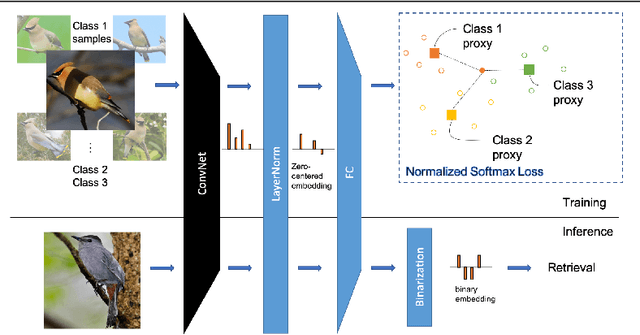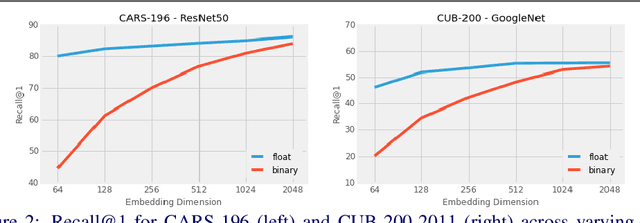Making Classification Competitive for Deep Metric Learning
Paper and Code
Nov 30, 2018



Deep metric learning aims to learn a function mapping image pixels to embedding feature vectors that model the similarity between images. The majority of current approaches are non-parametric, learning the metric space directly through the supervision of similar (pairs) or relatively similar (triplets) sets of images. A difficult challenge for training these approaches is mining informative samples of images as the metric space is learned with only the local context present within a single mini-batch. Alternative approaches use parametric metric learning to eliminate the need for sampling through supervision of images to proxies. Although this simplifies optimization, such proxy-based approaches have lagged behind in performance. In this work, we demonstrate that a standard classification network can be transformed into a variant of proxy-based metric learning that is competitive against non-parametric approaches across a wide variety of image retrieval tasks. We address key challenges in proxy-based metric learning such as performance under extreme classification and describe techniques to stabilize and learn higher dimensional embeddings. We evaluate our approach on the CAR-196, CUB-200-2011, Stanford Online Product, and In-Shop datasets for image retrieval and clustering. Finally, we show that our softmax classification approach can learn high-dimensional binary embeddings that achieve new state-of-the-art performance on all datasets evaluated with a memory footprint that is the same or smaller than competing approaches.
 Add to Chrome
Add to Chrome Add to Firefox
Add to Firefox Add to Edge
Add to Edge